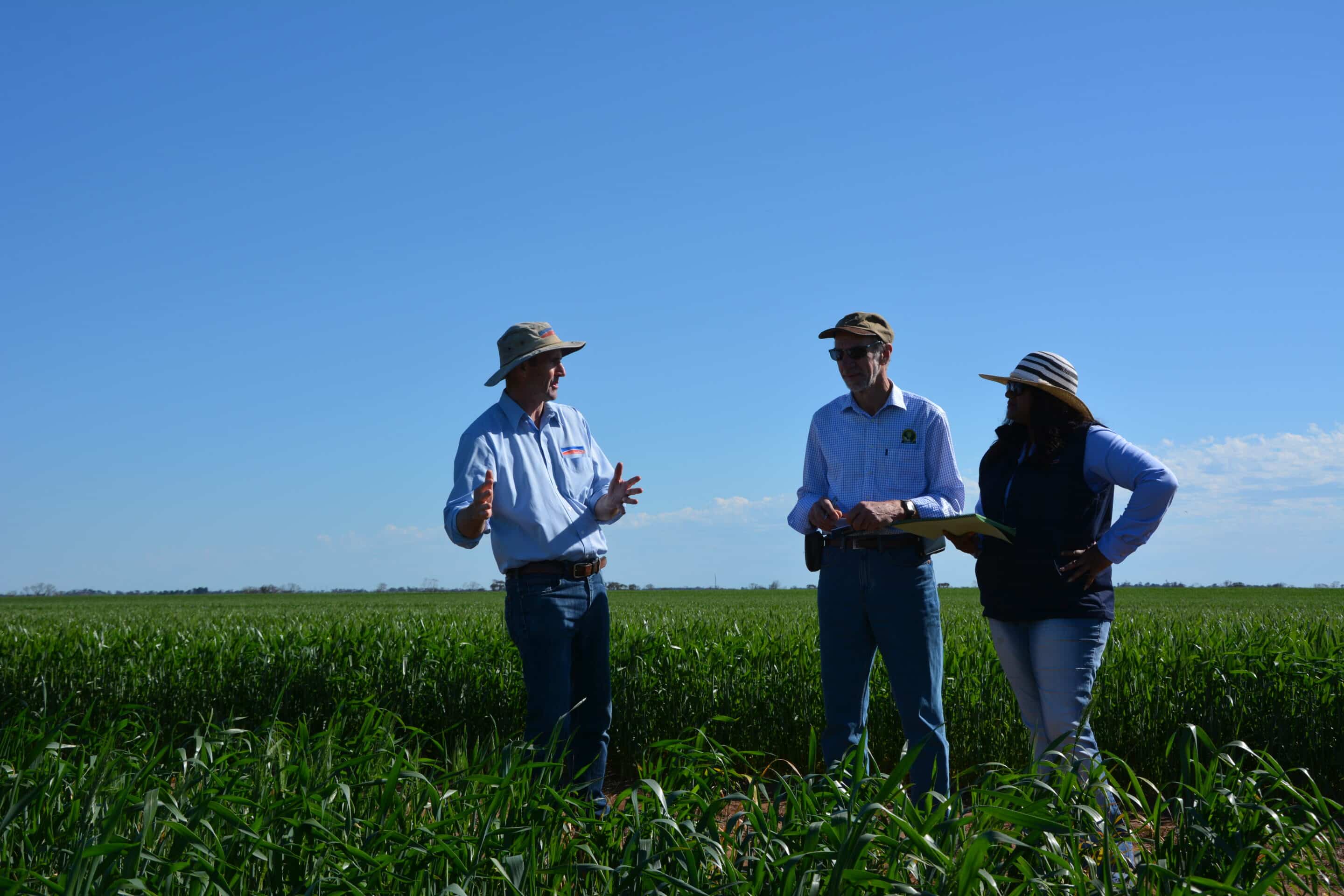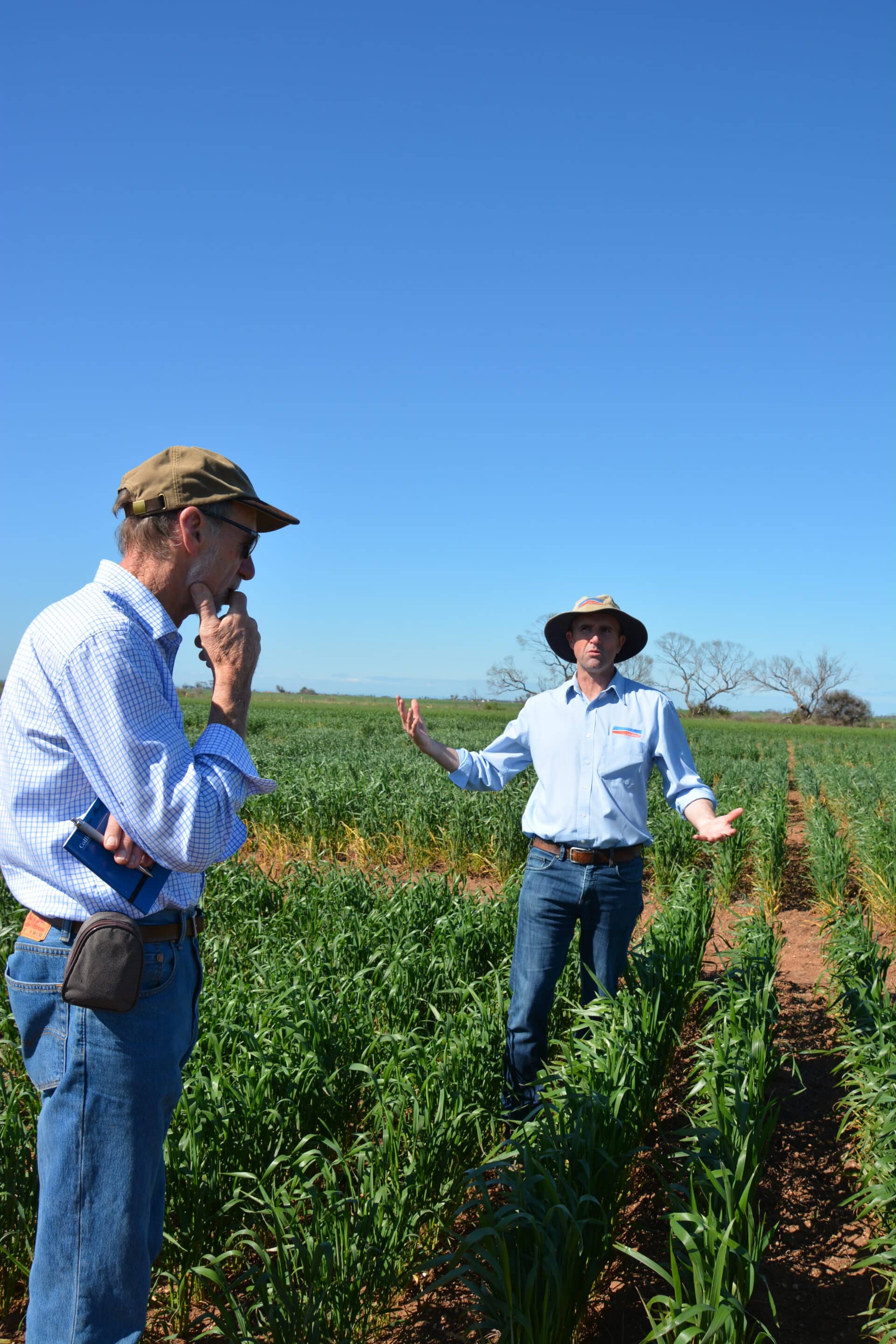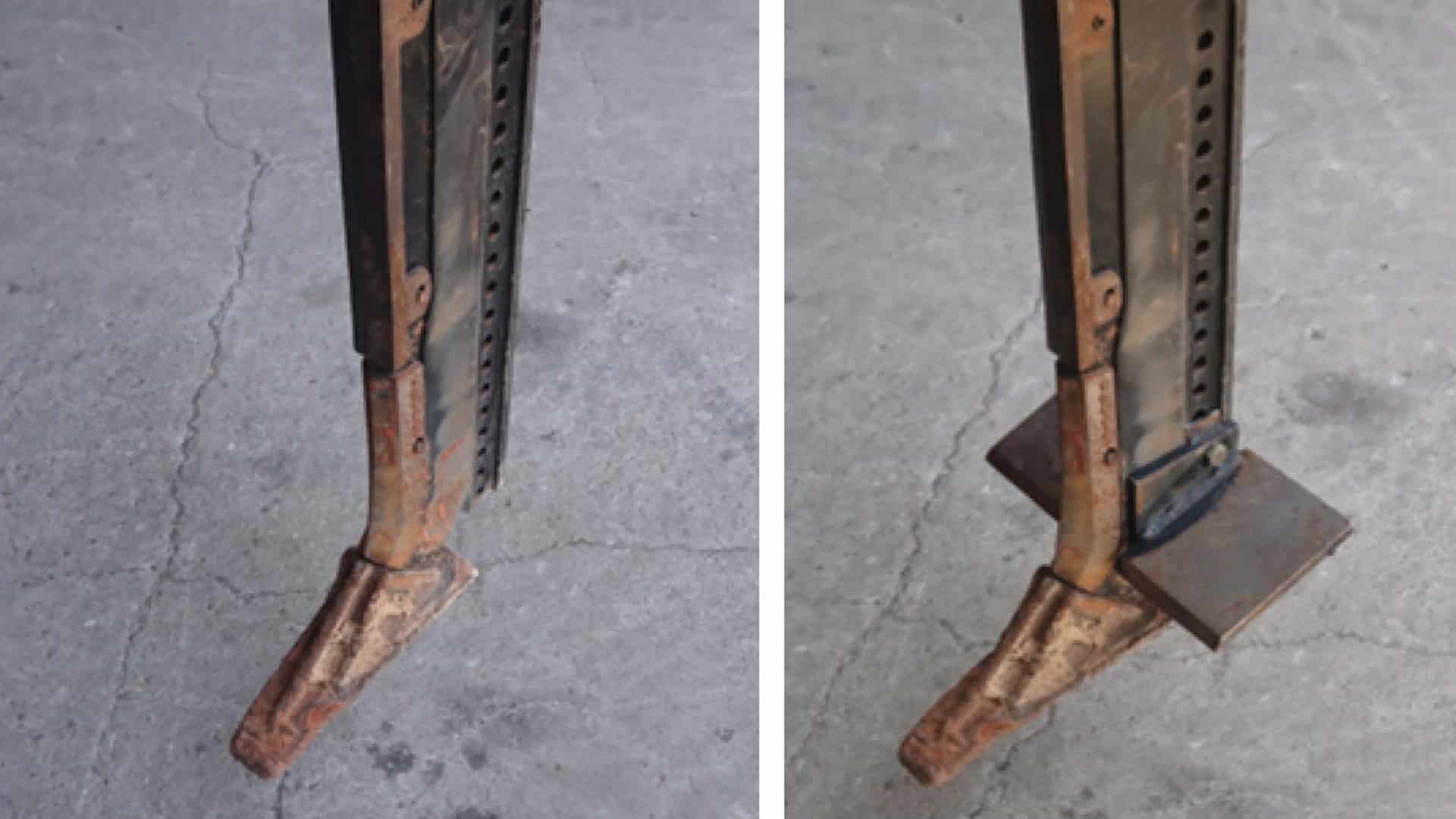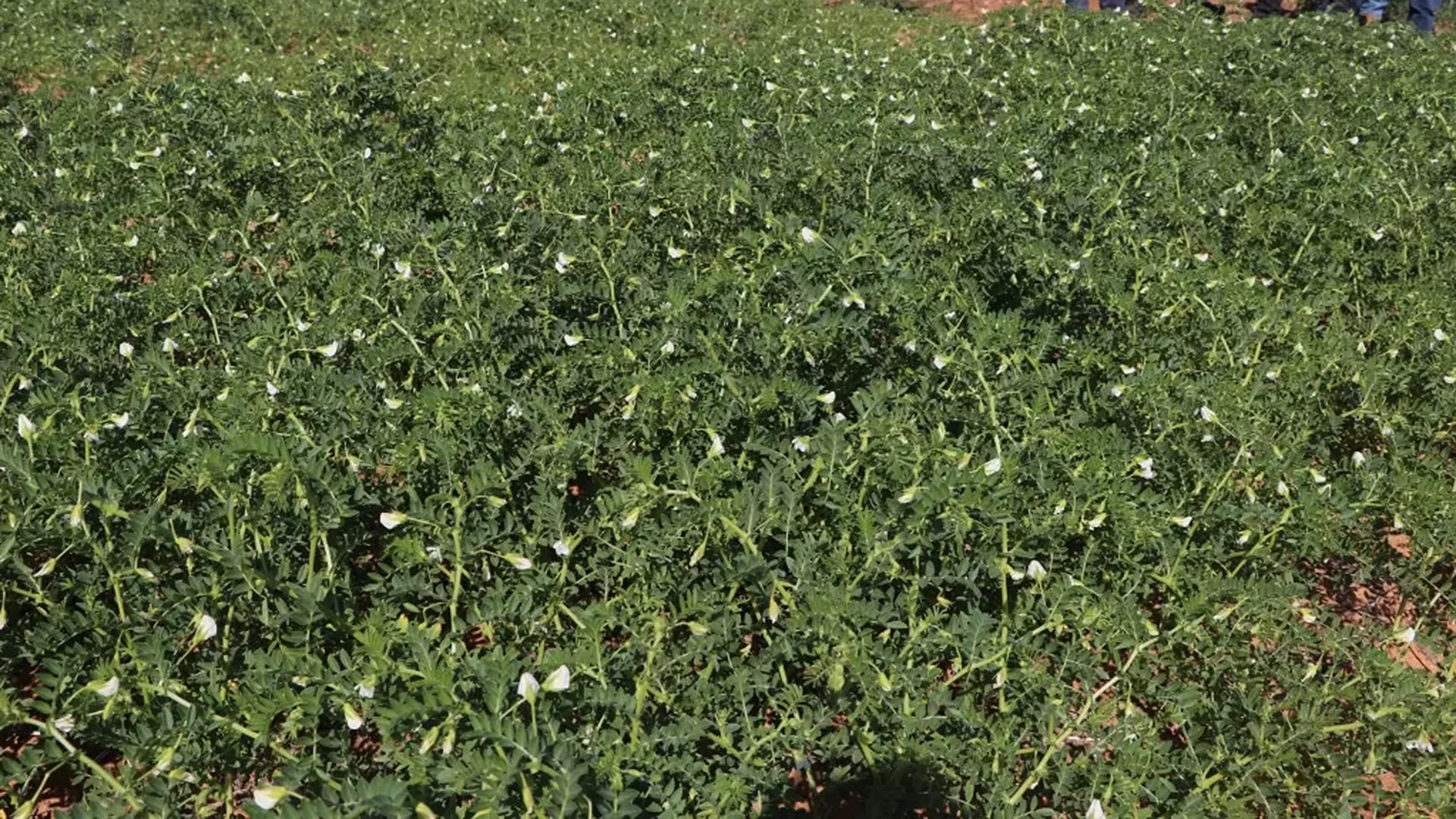START
FINISH
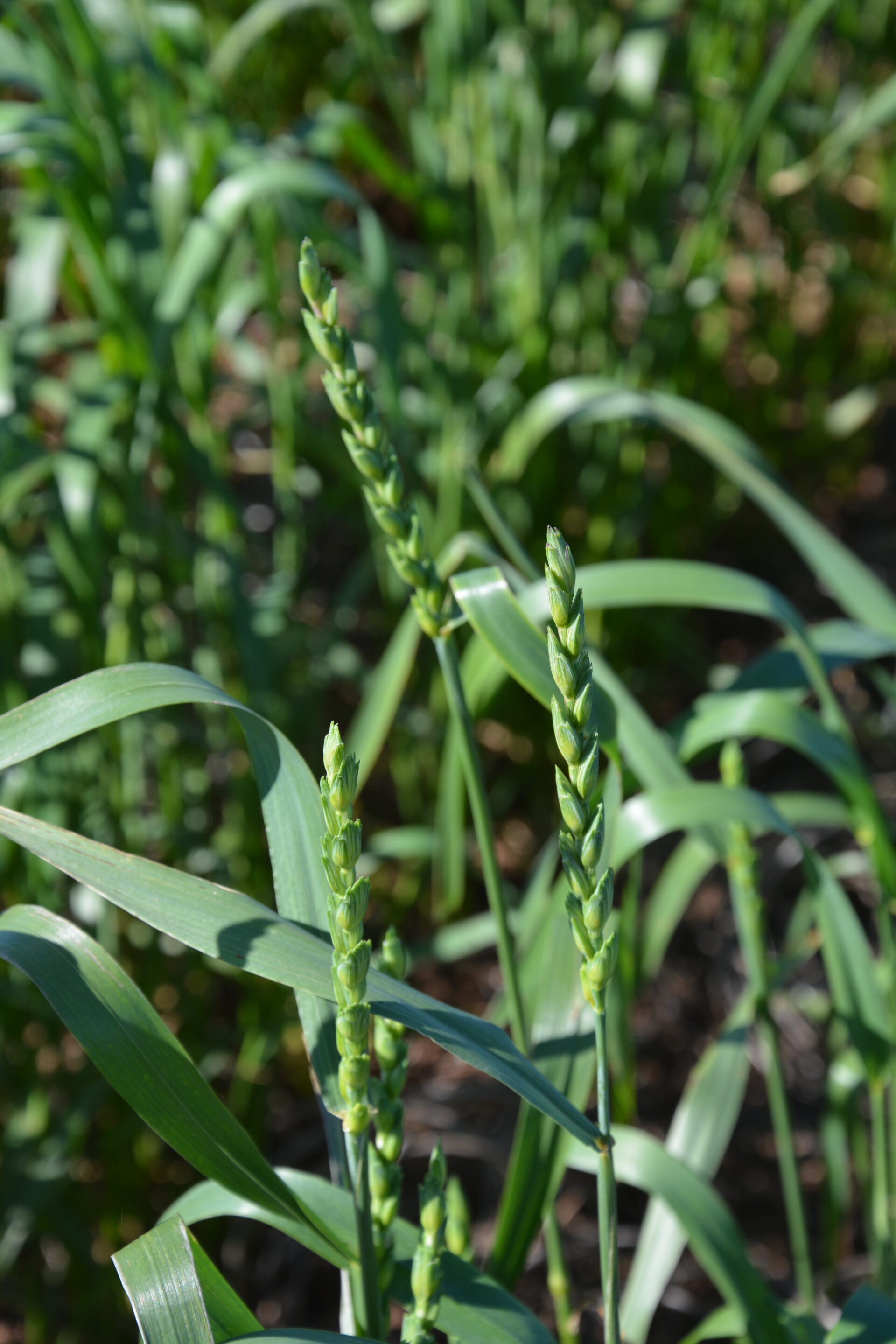
Summary
LongReach Plant Breeders, in collaboration with SAGIT, has developed a dual-purpose awnless wheat germplasm to be trialed for target yield, grain and hay quality and frost tolerance over the coming seasons. The variety is scheduled to be released for the 2024/2025 growing season.
The variety will achieve AH/APW grain quality if taken to harvest and will be suitable for cutting to hay either pre or post ear emergence. This allows growers to maximise their returns in frost-free years and mitigate losses if the crop is frost-affected.
Background
Large areas of South Australia’s cropping land carry an annual frost risk, and substantial losses have been incurred by SA growers over past seasons. In 2017, losses to frost were estimated at $100 million.
While awned wheat generally delivers high quality grain, it is less suitable for cutting to hay if damaged by a frost event after ear emergence. Awns in fodder can damage ruminants’ delicate oral linings.
LongReach Plant Breeders (LPB) set out to develop an awnless wheat germplasm with good maturity, frost tolerance, and grain quality characteristics that would be suitable for all cropping regions of the state.
This germplasm was developed using the double haploid technique. Double haploid shortens the number of breeding cycles required to achieve high likelihood of the desired trait being passed on to subsequent generations. Typically, reliable traits can be developed in a single generation, compared to the six generations typically required through conventional breeding.
Research Aims
The core objective of the project was to produce double haploid lines for the development of a dual purpose awnless wheat suitable for both grain and hay production in all wheat production areas of South Australia.
In The Field
Crossing parents and additional germplasm were sourced from the CSIRO and the Australian Grains Genebank. Crosses were then done by the University of Sydney Plant Breeding Institute at Cobbitty, NSW and the University of Adelaide, SA. The double haploid populations were developed by the Western Australian Department of Primary Industries and Regional Development Agriculture and Food Division.
LPB managed seed preparation, field assessments and administration.
The project used several nursery sites in frost prone regions of South Australia, including at Naracoorte, Pinery, Freeling, Balaklava, Birchip,as well as South Australia’s Mid North and Mallee.
The breeding program was hampered by very dry season finishes in 2018 and 2019 and somewhat disrupted by adverse conditions during the summer of 2019. The 2019 summer nursery observation rows at Naracoorte were severely damaged by three days with temperatures above 40°C strong winds that sandblasted the plots. Some 70 per cent of stage 1 germplasm was lost due to these events, but reserve seeds were planted in pots and grown under shelter by Andrew Matthews of Trans Grains at Virginia, SA.
The winter nursery was also damaged by -5°C frosts at Pinery, SA, in 2019. This event impacted plant stems as well as ears at growth stages from booting to half grain fill.
Despite these setbacks, the project was successfully completed by 2020.
Results
LPB has successfully developed germplasm for awnless wheat with AH/APW grain quality, high frost tolerance, and excellent residual value as fodder of affected by frost and cut for hay.
Over three years of crossing and double haploid population development, the germplasm has attained the range, growth habits, maturity and yield to make it suitable for all cropping areas of South Australia and frost-prone regions in particular.
The germplasm is now entered into breeding rows as well as stage 1, stage 2 and stage 3 trials within the LPB breeding program. Variety trials are underway in frost prone regions of the state and commercial release is expected in time for sowing in 2024.
Project Participants
LongReach Plant Breeders: Shafiya Hussein, Dr Bertus Jacobs
The Problem
Frost is estimated to cost SA grain growers some $33 million per year, and up to $100 million in severe years. While frost-affected crops can be cut for hay, wheat awns can damage sensitive oral linings in stock.
The research
LongReach Plant Breeders have used the double haploid breeding technique to accelerate development of a frost-tolerant, awnless wheat variety suitable for dual purpose (grain or hay) production.
More information
Dr Bertus Jacobs, LongReach Plant Breeders
T: 0417 137 766
E: [email protected]
Value for Growers
Frost has become a serious issue for South Australian growers in recent years, with total losses to frost estimated at $200 million over the 2016, 2017, 2018 and 2019 harvests. This AH/APW awnless dual purpose wheat variety will be suitable for cultivation in all cropping area and ideal for growing frost-prone areas.
If affected by frost, growers can cut and sell the crop for hay to minimise losses. If frost is avoided, the grain can be harvested and sold at a premium.

